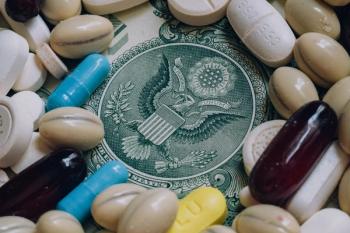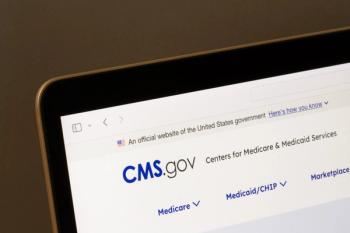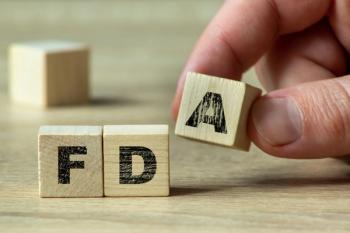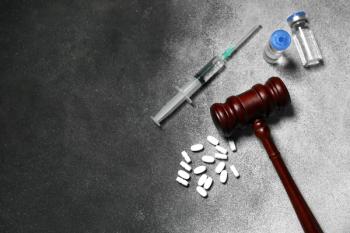
Pharmacists Take Charge During an In-Flight Medical Emergency
A group of pharmacists rose to the occasion to help a man having a medical emergency aboard a recent United flight bound for Newark, New Jersey.
Editors note: This article origianlly appeared on
This story has been updated with additional information about the man’s care, and other clarifications, at 2 pm EST Friday.
The last session of a pharmacy conference may have ended at 2 pm PST on Thursday in Las Vegas, Nevada, but for the more than half a dozen pharmacists and pharmacy students aboard United Airlines flight 1735 en route to Newark, New Jersey, the training and networking was about to continue.
They just didn’t know it yet.
Nor did I. We were all coming home after attending the 2022 American Society of Health-System Pharmacists (ASHP) Midyear Clinical Meeting & Exhibition. It was the 57th Midyear meeting for ASHP; the pharmacists and students were there for education credits and more, and I was there to write about different sessions for AJMC.com, the website of The American Journal of Managed Care®.
About 40 minutes after the plane took off around 3:50 pm PST, I heard, from my seat in the back of the plane, what sounded like a scream and some yelling. Someone was standing toward the middle of the plane looking around for help and a flight attendant was yelling for “any medical personnel to please assist.” She yelled it again, asking for a doctor or MD.
A woman behind me, in the very last row, stood up. “I’m a medical professional,” she said. "Are you a doctor?" the flight attendant asked. “I’m a pharmacist,” the woman said.
Sylvia Narciso, PharmD, is a clinical pharmacy specialist in the emergency department at Danbury Hospital in Danbury, Connecticut, where her job includes responding to strokes, codes, and preparing medicine at the bedside.
The man who needed attention is a 39-year-old-software engineer from Short Hills, New Jersey, who had been attending a Microsoft convention. All of a sudden, another passenger told the flight attendant and Narciso, he appeared to be having a small seizure.
The man stabilized with minimal attention and Narciso came back to her seat. He should be ok, she told me.
I went back to looking at the screen on my laptop and tried to do some work. About 30 minutes later, there was another scream, except now it was coming from right behind me, and it was Narciso. The man had gotten up to use the bathroom and fell, striking his head on the hand sanitizer dispenser right next to her row, crashing to the floor.
Now there was more yelling for help, and suddenly, more pharmacists came toward the back of the plane. They weren’t sure if he had seized or simply passed out, but he had hit his head and was barely conscious.
With Narciso still in charge, they rolled him onto his side in between the bathroom doors.
In an email exchange with me Friday, Narciso provided more information about what the ad hoc pharmacy “team” did and why.
“I had a feeling he was going to vomit and he did. So it was important that he didn't choke when he did so,” she wrote.
Then, they ran through the differentials, checking his glucose levels, blood pressure, heart rate, oxygen saturation, and temperature. They also performed a stroke assessment, checked for a concussion by looking at his pupils, and checked for signs of a deep vein thrombosis. He had no chest pain and no trouble breathing.
A flight attendant was reporting his vital signs to a medic on the ground, and the medic told them to administer oxygen.
The man slowly came back around again, and Narciso kept asking him questions to check his orientation to time and place.
No, he didn’t have a history of seizure.
No, he didn’t have diabetes.
Yes, he had eaten.
She said they also asked about any medicines he was on—in particular, she wrote, “any blood thinners which could have led to worse outcomes after hitting his head.”
They brought his backpack to the back of the plane to elevate his legs, and she credited another pharmacist on board with “the brilliant idea” of using their Apple Watch to perform an electrocardiogram. It was normal.
Emergency medical technicians would meet the plane when we landed, but that was still more than an hour away, and he was sitting on the floor with his back up against the wall. He still felt sick, but there was not a lot more that could be done.
With every plane flying at capacity, there is no room to clear an aisle of other seated passengers to lay someone out, like first aid websites (which this editor was helplessly Googling) would advise you to do.
“It’s ok, buddy, we’re almost there,” Narciso said to him, over and over again. Eventually, he was helped into the row behind me—her seat—while he got more oxygen. And then he was able to have some conversations with Anant Shah, a fourth-year pharmacy student at the University at Buffalo, who had been helping Narciso with the oxygen bottles.
At one point, the man looked at Narciso and asked, “Are you okay to stand like that?” as she had now been on her feet for nearly the entire flight (at one point, a little boy mistook her for a flight attendant and asked her for a cup of water, since food and beverage service had stopped during the emergency).
“Pharmacists historically do not sit, so this is good,” she responded.
While nearby passengers and flight attendants praised Narciso, she complimented Shah, as a student, for jumping in and helping, and offered to be a reference for him, if he ever needed one.
“I think what he did was amazing,” she said.
On Friday, Narciso also complimented Mirna Hanna, PharmD, BCPS, MPH, CCP, CIC, BCMTMS, a critical care educator, who had been sitting in front of the ill passenger, and who stayed in the back with Narciso for the rest of the flight. “Her insight and care for the patient was admirable and she was the first to notice the patient had initially had a seizure,” Narciso said.
With the patient’s permission, Narciso stayed in touch with him over text, and on Friday he said he was feeling much better and was grateful to everyone for their help.
When the plane landed around 11:30 pm EST Thursday, the captain urged everyone to stay in their seats so Newark emergency services could board the plane first and take the man to the hospital. The captain thanked the medical personnel for their help.
“Go pharmacy!” someone yelled.
As I left the plane, the pharmacists stood in a circle in the gangway, trading contact information to stay in touch.
“I am so grateful I had a team behind me to support and offer recommendations. This is what pharmacy is truly all about,” Narciso wrote me later.
For more coverage of ASHP's 2022 Midyear Clinical Meeting, visit
Newsletter
Pharmacy practice is always changing. Stay ahead of the curve with the Drug Topics newsletter and get the latest drug information, industry trends, and patient care tips.





















































































































































